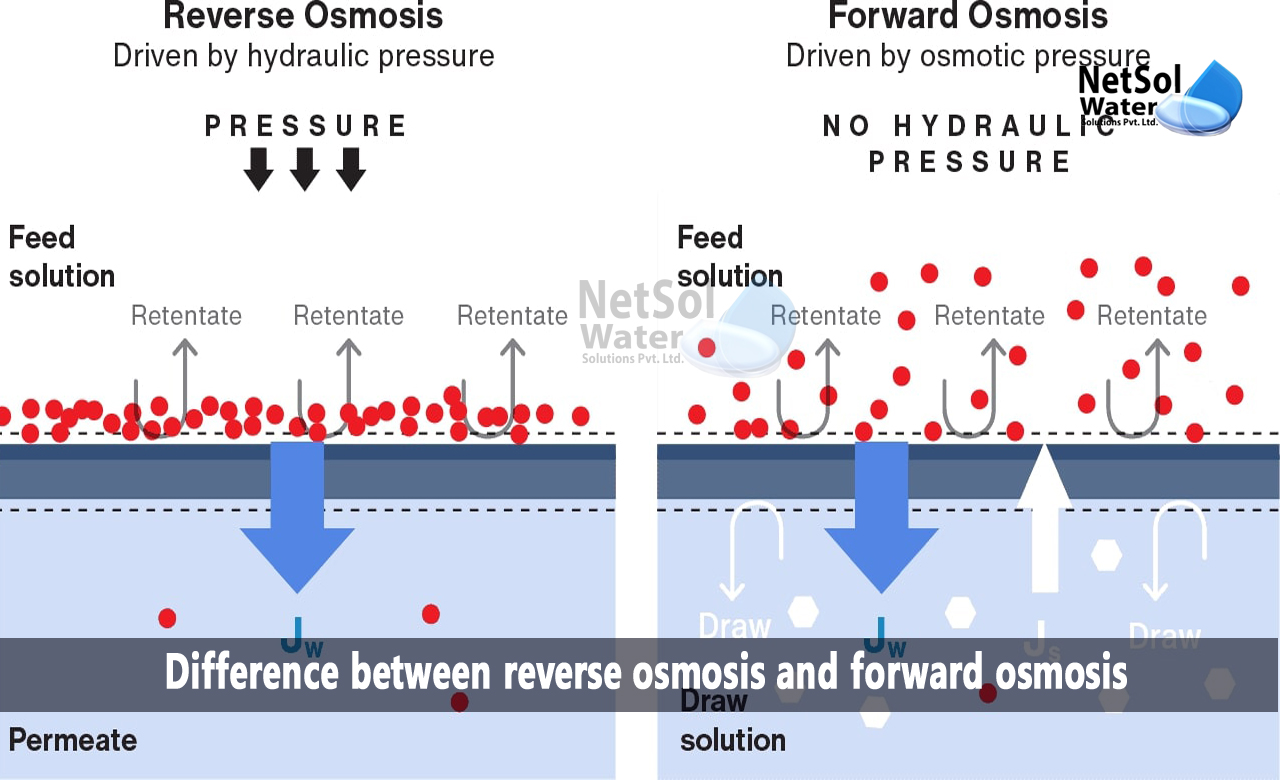Difference between reverse osmosis and forward osmosis
The majority of people are aware of how dangerous drinking tainted tap water is. Although, there are many options on the market, it is crucial to know what each water purifier performs, in order to select the one that is ideal for you.
Thus, the terms reverse osmosis and forward osmosis must be properly understood. Here, in this blog let’s know the difference between reverse osmosis and forward osmosis.
How does a RO Plant function?
Pressure is used to push water through a semi-permeable membrane in the reverse osmosis water filtration system. While, water travels through to the other end of this membrane, the solid pollutants are held on one side. Using this technology, the membrane can filter out anything bigger than a water molecule, from the water that is passing across it.
The elimination of fluoride, nitrate, sulphate, salt, chloride, iron, mercury, zinc, arsenic, lead, cyanide, and other dangerous chemicals, is guaranteed by Commercial RO Plants. However, because these systems are so good at removing particles from water, they might also take out important minerals. Many current RO water plants have a new type of technology that permits minerals like potassium, calcium, and magnesium to be retained in the water, in order to solve this issue.
What is forward osmosis?
Forward osmosis (FO) is a method of separating water from dissolved substances using a semipermeable membrane, and the power of osmotic pressure. In order to move water across the membrane while keeping all of the dissolved solutes on the other side, osmotic pressure is used.
A number of industrial water treatment applications, such as the wastewater management, product concentration, and water recycling, benefit from the usage of forward osmosis technology. This is because the feed solution is solely used to extract clean water using an incredibly effective filtration procedure. Because, it relies on the inherent energy of osmotic pressure, it is also a less energy-intensive process.
What distinguishes reverse osmosis from forward osmosis?
To distinguish it from reverse osmosis, another membrane-based water treatment technique frequently employed for industrial effluent processing, forward osmosis is typically used in industrial water treatment contexts.
Forward osmosis (FO) is a membrane-based water treatment technique similar to reverse osmosis (RO). But, how water is pushed through the membrane in reverse and forward osmosis differs significantly.
In reverse osmosis, hydraulic pressure is used to push the water through the membrane, whereas, natural osmotic pressure is used in forward osmosis to force water through the membrane. Forward osmosis is resistant against fouling and can reduce compaction of fouling materials on the membrane surface, when operated at low hydraulic pressure.
How can we assist?
Netsol Water provides water that is safe and healthy. Our Commercial RO Plants require less maintenance. With cutting-edge water filtration technology, purchase the best RO plants from us. Our RO Plants are ISO certified, BIS approved, and in high demand in the water treatment sector, due to their ability to convert untreated, contaminated water into usable and pure water.
To guarantee you get the most out of your equipment, we also offer installation, training, commissioning, and support. For further information or to make a product purchase, contact us at +91-9650608473 or drop a mail at enquiry@netsolwater.com



